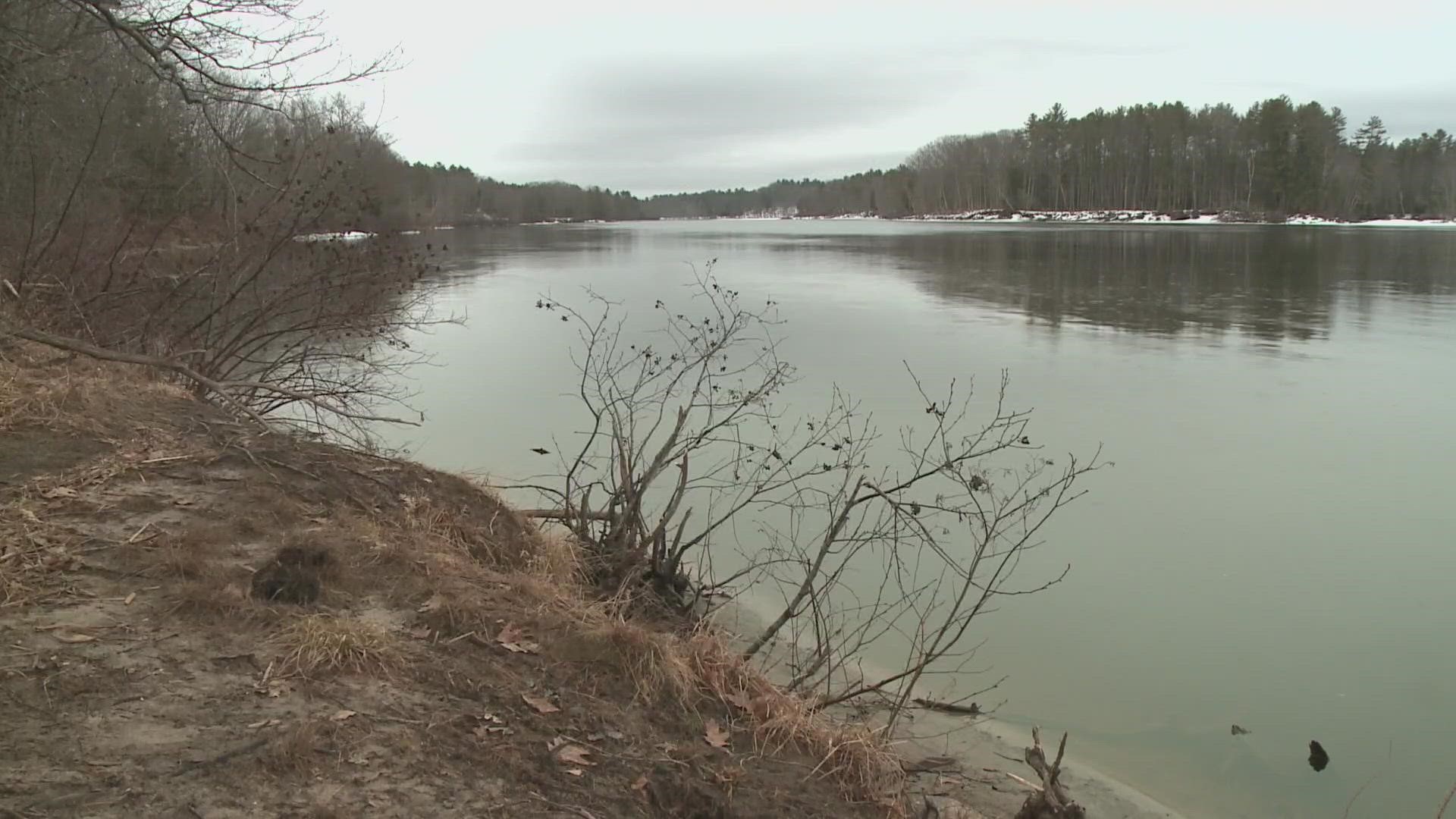MAINE, Maine — The Maine Center for Disease Control and Prevention is reviewing data on PFAS chemicals in fish samples taken from three major rivers in Maine after a national study found levels in freshwater fish are much higher than in commercial fish.
The report was published in the peer-reviewed journal, Environmental Research.
Studies have linked exposure to the class of man-made chemicals to increased risk of kidney and testicular cancer, complications during pregnancy, and thyroid problems.
Eight waterways are currently flagged with fish consumption advisories for PFAS. Regulators are now looking at the possibility of adding more to that list.
Maine's thousands of miles of rivers and streams and hundreds of freshwater lakes are home to a variety of fish. But scientists said just eating one freshwater fish annually could spike toxic chemicals in your bloodstream
David Andrews is a senior scientist at the Environmental Working Group.
"Even consuming any of these freshwater fish infrequently, once a year, would like to increase our blood serum levels and our exposure for the year," Andrews explained.
EWG analyzed Environmental Protection Agency data on PFAS chemicals in more than 500 fish samples from rivers and lakes across the United States and Maine taken between 2013 and 2015.
The EPA has set advisory levels for common PFAS compounds, PFOS, and PFOA in drinking water to 0.02 parts per trillion. But 8,000 parts per trillion was common in the analyzed freshwater fish.
An interactive map showed the data coming from half a dozen waterways from the Saco to the Machias River, plus a breakdown of the chemicals. The highest was PFOS, one of the thousands of forms of the compounds.
"That was the primary ingredient in Scotchgard. It was also used in a lot of textile coatings and in firefighting foam," Andrews said.
The highest levels of PFOS were found in smallmouth bass, taken from two areas of the Kennebec River between Waterville and Augusta. Lower levels of the chemicals were detected in fish in the Androscoggin River in Lisbon Falls and in the East Branch of the Penobscot River.
Lindsay Hammes, communications director for the Maine Center for Disease Control and Prevention released the following statement:
"At this time, the state is not adding the seven waterways from the EPA’s 2020 report, which is based on data from 2014, to the list of waterways included in the “do not eat” advisory. None of these waterways warrants a 'do not eat' consumption advisory related to the presence of PFOS based on these data."
"Three of the seven waterways warrant further investigation. Maine CDC is reviewing new data on PFOS in fish from the Kennebec and Androscoggin Rivers and will evaluate the need for a fish consumption advisory in consultation with Maine’s Departments of Inland Fisheries and Wildlife (IF&W) and Environmental Protection (DEP).
"Before issuing any advisories for the east branch of the Penobscot River, DEP would first need to confirm the EPA’s 2014 result from the limited sampling of this waterway with a more robust and more recent sampling of fish from this waterway. Once those data are available, an informed decision can be made as to whether an advisory would be warranted. It is important to note that there is already a statewide fish consumption advisory in place related to the presence of mercury. For four of seven of the waterways in the EPA report, the reported PFOS fish tissue levels do not warrant a consumption advisory that is more restrictive than the current statewide advisory in place already."
The Maine CDC recommends anglers and fishermen should be aware of the existing fish consumption advisories. Dr. Rachel Criswell is a family practitioner at Redington-Farivew General Hospital. She monitors patients who have high levels of chemicals in their systems
"We really are dependent on fishing and hunting for food and recreation, so I tell people to pay attention to those warnings," Criswell said.

